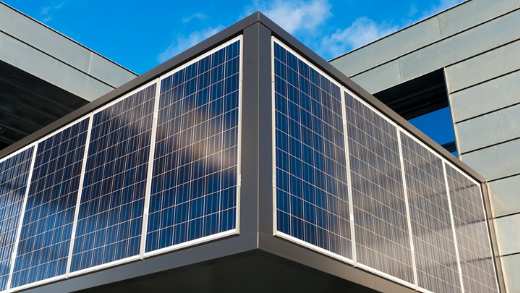Read this article to understand:
- Why the outlook for real estate debt is improving after a challenging period
- The potential opportunities stemming from a funding gap between senior and junior debt
- Why amending existing loans to incorporate sustainable KPIs could be a theme this year
After demonstrating resilience in the first three quarters of 2022, the fourth quarter finally saw the UK real estate sector dragged into the maelstrom that affected all risk assets last year. Rampant inflation, rising interest rates and higher borrowing costs combined to cause a sharp depreciation in capital values, with the UK MSCI UK Quarterly Property Index recording a negative total return of -11.9 per cent in Q4, the biggest decline since the global financial crisis of 2008.1
The returns story was replicated in real estate debt transaction volumes. In the year to September, transaction volumes were running ahead of the previous year and the five-year average.2 But surging rates, and the fallout from the “mini-budget” in September brought that momentum to a shuddering halt. December’s transaction volumes of £2.4 billion was the weakest end to a year since 2000 and is almost 80 per cent below the five-year December average. The full-year figure of £56 billion was around six per cent below the five-year average.3
After the recent turbulence, will calm be restored to real estate debt in 2023? To answer this and more, we put the questions to Gregor Bamert, head of real estate debt at Aviva Investors.
What is your overall outlook for 2023?
We are more positive about opportunities in 2023. Last year, particularly the latter part, was characterised by uncertainty. It was difficult to have conviction in certain transactions and investment approaches. But now we can see a clearer path, both at the macro level and within the sector.
We have seen a reasonable uptick in activity since the start of the year
We have seen a reasonable uptick in activity since the start of the year. For real estate debt, the gestation period of a transaction is around three months; the fact we are busy now means we are looking to close many deals in the spring.
Additionally, we have not yet seen a wave of distressed transactions that some were forecasting late last year. Whether that is just a question of time or whether that doesn’t materialise is still a question. What I would say is that there are certainly situations where leverage levels, particularly around upcoming refinancings, will need to come down and a solution will need to be found.
Real estate debt experienced a more immediate reaction than other real asset sectors to the rising rate environment. Has pricing settled into a new equilibrium?
Not across the board. In some ways, it is helpful that the pricing movements were as fast as they were. The logistics sector has strong underlying dynamics, but yields had gone too low, and so we saw a quick adjustment. That recalibration was a catalyst for some market participants to get involved again. It is less helpful when capital values gradually drift down for a prolonged period; it’s hard to find the right entry point and understand what to factor in.
The yields needed to adjust in the logistics area
Differentiating from those areas where it is just a matter of yield shift is vital. In logistics, despite strong underlying occupier demand and rental growth, yields needed to adjust. In other sectors, there is more of a structural realignment. The differentiation between office buildings providing a place where people can collaborate and be inspired versus the ones that don’t offer that experience has not yet fully played through valuations.
In which sectors are you seeing attractive opportunities, including any areas where valuations now offer a more attractive entry point?
What matters is your level of confidence on the trajectory of income. We touched on logistics; there are opportunities there. We also see opportunities in the living sector, such as in rented residential as well as student accommodation; and in the office sector where, with the right plan in place, you can turn around a building in a good location.
You often have an obligation to revalue the asset on a regular basis in loan agreements
In terms of the impact of valuations, often in loan agreements you have an obligation to revalue the asset on a regular basis. When you come into a period of uncertainty, lenders will wonder whether it’s the right time to do that assessment. This is to understand the health of the borrower’s book to get a better sense of what the true loan-to-value should be; and whether any actions are needed to protect the lender's position.
We are fortunate because we have a proprietary dynamic model that re-values the assets in our book monthly. So, in periods where we see such significant changes, we can replicate that in close to real time. That allows us to prioritise where our focus needs to be, but also look at opportunities.
You touched on origination picking up; does that reflect both lender and borrower appetite?
Yes. We had some erratic movements in longer-term rates, both in gilts and the swap market. That made it very difficult for a borrower to know what the borrowing costs are going to be. Now that we are seeing a degree of stabilisation in the broader yield environment, and the trajectory of where rates are going seems clearer, it is time to lock-in that financing.
There's a gap in the funding market where senior lenders may be pulling back slightly on LTVs
There's also a gap in the funding market where senior lenders may be pulling back slightly on LTVs or focusing more on core properties. If somebody has a refinancing coming up in the near term, it's probably better to move sooner rather than to wait, as there won’t be unlimited capacity for that sort of refinancing.
We see the funding gap as an opportunity. There are transactions where you have solid underlying property fundamentals with good sponsors, but the metrics around debt servicing costs and leverage may not be favourable from a purely senior debt perspective. That means the senior lender will lend you less money, which leaves a borrower with three options: injecting more equity, selling the asset rather than repaying, or trying to source additional leverage.
In such situations, there may be an opportunity to work closely with sponsors and provide a solution, which from a return perspective can be very attractive to investors. By providing such refinancing solutions through whole loans or other structures, investors can look at returns more typical of equity investment with a lower risk. This is an area we are actively looking at.
A recent article in the Financial Times referenced a major US real estate developer “giving the keys back to the bank” on certain assets that no longer made economic sense. Do you have any thoughts on that?
The turbulence and uncertainty of recent years have highlighted the range of skills required for commercial real estate owners to be successful. Aside from having clear strategies and a strong grasp of property fundamentals, a detailed understanding of the needs of occupiers and investors, innovative approaches to place making, leadership in sustainability, creative design and appreciation of longer-term trends have all been key factors.
We focus our attentions on borrowers demonstrating the skill, engagement and commitment for success over the medium and long term
From time to time, we also see some property owners trying a much simpler route rather than using the above skills. They apply considerable leverage and walk away when there are any difficulties. From a lending perspective, we have no appetite to engage with borrowers following this strategy and focus our attentions on those demonstrating the skill, engagement and commitment for success over the medium and long term.
What's the outlook for sustainability-linked loans?
Activity in that area was a bit lower during Q4 last year, which simply reflected what was going on in the wider market. The proportion of sustainable transition loans last year for our overall activity rose from around 50 to 55 per cent over 2021 levels. We anticipate that proportion will grow further in 2023.
Adapting existing loans to incorporate sustainability metrics could become a key theme this year
We are working on a number of sizable transactions, including several in the office sector, where we are working with sponsors to execute a business plan that will see improvements to existing assets in attractive locations. Adapting existing loans to incorporate sustainability metrics could become a key theme this year, and it is an area we are actively looking at.
What about client demand?
The dialogue has definitely become more constructive since the turn of the year. Whereas liquidity was the big theme in late 2022, existing investors and potential new clients are looking past that and asking where the opportunities are to get a broadly attractive return over public markets across the medium to longer term.

















